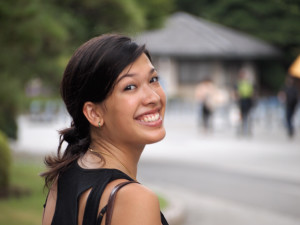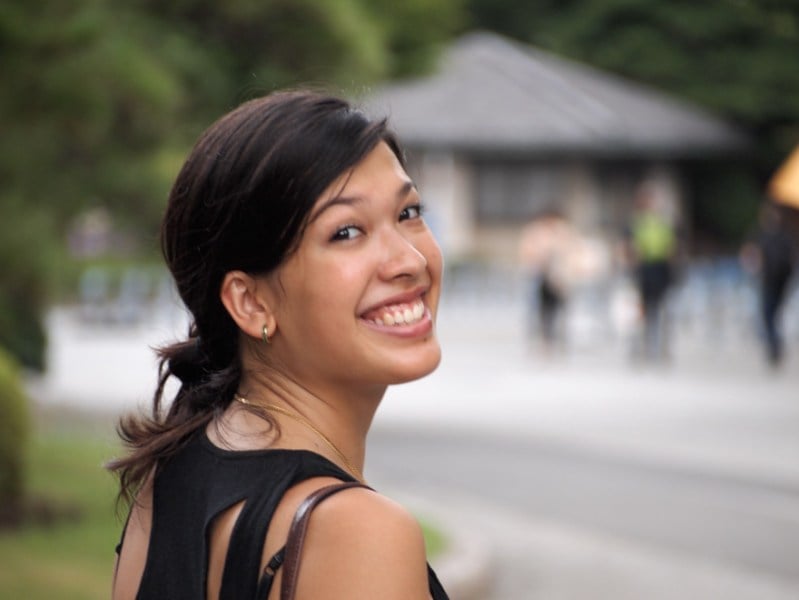
A bone marrow donation campaign has emerged on social media within the Stanford community after the cousin of several Stanford students was diagnosed with Acute Myeloid Leukemia (AML).
Twenty-four-year-old Lara Casalotti speaks five languages, volunteers with at-risk youth, studies global migration and loves yoga. She was working to improve conditions for domestic migrant workers in Thailand when she found out she was battling Acute Myeloid Leukemia. Doctors informed her she had until April to find a stem cell donor to save her life.
Match4Lara, Casalotti’s campaign to find a match, recently gained popularity on social media within the Stanford community since Nina Ligon ’17, Casalotti’s cousin, has been heading the campaign within the United States. Casalotti’s family launched the campaign to raise awareness about the limited biracial bone marrow registry.
Because Casalotti is of Chinese Thai and Italian descent, finding a match is extremely difficult. Ravi Majeti, associate professor of hematology at the Stanford School of Medicine, explained that ethnic minority groups are heavily underrepresented in the bone marrow donor registry and matches for mixed race patients are rare.
“When you start mixing these populations that have never significantly historically mixed, you end up with new human leukocyte antigen (HLA) combinations that just aren’t represented amongst many other people,” Majeti said.
AML treatment requires a transplant in addition to chemotherapy. The process aims to wipe out the patient’s own blood system along with their disease, before repopulating the system with blood stem cells coming from a donor.
Because a large determinant of success for this treatment involves finding a donor who is a match, Casalotti’s family launched match4lara.com, as well as a Facebook page which has amassed 14,018 likes. Their Twitter campaign has 628 followers and even scored a tweet from J.K. Rowling, famed author of the Harry Potter series.
According to Majeti, Casalotti’s chances of finding a match depend on finding a donor who shares her histocompatibility features.
“Histocompatibility genes are among the most diverse genes in the entire human genome from person to person which makes it a challenge to find a match,” Majeti said.
The diversity of histocompatibility genes is increased in people whose parents come from very diverse ethnic backgrounds.
Ligon explained that running the campaign is a family effort, with 11 cousins spread out across the world and leading campaigns in Thailand, the United Kingdom and the United States. The family’s goal is to extend the search beyond simply finding a match for Lara. Instead, they hope to also help others battling AML by raising awareness about the need for mixed race people and other ethnic minorities to register in the worldwide registry.
Casalotti grew up in Hampstead in the United Kingdom. After hearing of her diagnosis, her childhood friends immediately started organizing donor drives at different college campuses around England. With hundreds of friends individually pushing for donor drives, these campaigns were extremely successful. According to Varsity News Network, the Anthony Nolan charity supporting blood cancer patients saw a “fivefold increase in the number of new applicants to its register” after the campaign launched, describing the spike as “unprecedented.”
According to Ligon, within the first week of the drives, “3,000 more people signed up to be on the registry than [the number] who usually sign up per week.”
Casalotti’s campaign has received large media attention, but Sujitpan Lamsam, Casalotti’s aunt, told NBC News that converting that awareness to action for the larger community is most important.
This is not the first time that an AML campaign has permeated Stanford’s campus. Alumna Nina Polvanich Louie ’02, who was diagnosed with lymphoma, ran a similar campaign in 2013 and successfully signed up many people to the registry. Even though she did not find a match and ultimately used alternative methods to treat her lymphoma, 10 others found matches through her efforts.
The family, realizing that Lara has a much better chance of finding a match because of the campaign Louie ran, similarly hopes to help those currently looking for a donor and others who may need one in the future.
“It’s ironic because I think most people would say they’d donate stem cells for a loved one but wouldn’t do it just for any old person,” said Seb Casalotti, Lara’s brother. “But more often than not, you can’t actually help your family — so we’ve got to think as a community.”
However, since most of Casalotti’s cousins attend schools in California, they do not have a lot of connections to organizations at schools in other states. Even without a large base of friends to mobilize in the United States, Ligon is making a “call to action” for college students across the nation.
“I want every college campus in the U.S. onboard the campaign and hope that student groups will run more donor drives for minorities and mixed race people,” Ligon said.
Organizations such as Asian American clubs, minority clubs, sororities or fraternities often have an arranged structure that make it easy to organize these events.
Ligon hopes to dispel the idea that getting on the registry at donor drives is an invasive process. Instead, it takes only a swab of the inside of your cheek to get registered — a very simple process that is non-invasive and not time consuming. Ligon urges people to attend donor drives rather than doing a spit test at home, which takes a longer time to process.
“This is an extremely time-sensitive situation, and it is much faster to get registered at a drive,” Ligon said.
According to Majeti, there are two ways that a person can donate blood-forming stem and progenitor cells.
“One is with their bone marrow itself, in which case the person undergoes a surgical procedure in which a needle is repeatedly inserted into the pelvis to extract bone marrow,” Majeti said.
The pelvis holds a large volume of bone marrow, which can be extracted by syringe aspiration.
The second method, known as Mobilized Peripheral Blood, was developed over the last few decades and takes advantage of the fact that blood-forming stem and progenitor cells have a natural circulatory process and are continually transiting into the bloodstream.
“They leave the bone marrow, go into the blood and enter another bone marrow site,” Majeti said. “The donor can be administered agents to mobilize those blood stem cells and make them come out of the bone marrow in greater numbers. The blood can then be harvested, processed and given to the patient.”
Casalotti’s best chance of finding a match is to get as many people to do a cheek swab and register as possible. The match4lara.com website is a central hub for all information regarding locations and times of donor drives, and the Match4lara Facebook page streamlines updates about drives happening in various areas. At Stanford, Charlotte Sagan ’15, Sam Sagan ’18 and Nina Ligon ’16 are leading the action for the chance to support their cousin.
Contact Friend Chaikulngamdee at friendc ‘at’ stanford.edu.
